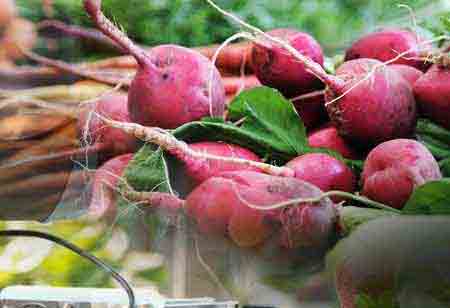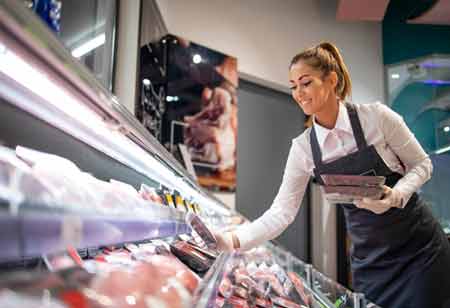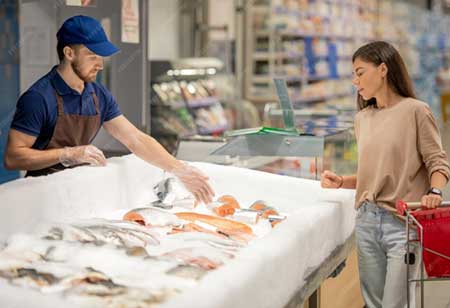Thank you for Subscribing to Food Business Review Weekly Brief
The Strategic Shift in Latin America's Foodservice Distribution Service
Latin America's foodservice supply chain is innovating culinary experiences through predictive inventory, AI demand planning, and optimized logistics, ensuring freshness and variety while empowering chefs.

By
Food Business Review | Wednesday, October 15, 2025
Stay ahead of the industry with exclusive feature stories on the top companies, expert insights and the latest news delivered straight to your inbox. Subscribe today.

Latin America’s foodservice supply chain is driving a new era of culinary innovation across the region. The journey of ingredients—from their source to the final dish—is being reimagined through smart, data-driven distribution that integrates predictive inventory management, AI-powered demand planning, and optimized logistics. This approach transcends traditional logistics by enabling unprecedented freshness, variety, and reliability, thus empowering chefs and food businesses to innovate with confidence. Supply chains in the region operated reactively, relying on past patterns and intuition. Today, digitalization and advanced analytics are reshaping this framework into an intelligent, interconnected ecosystem—one that is proactive, agile, and strategically aligned with the evolving demands of the gastronomic sector. This digital transformation marks a paradigm shift where the supply chain no longer limits creativity but actively fuels it, setting the stage for an innovative culinary future.
The Bedrock of Freshness and Variety
Predictive inventory management is transforming high-quality, fresh ingredients from a luxury into the standard for every memorable culinary creation. By leveraging historical sales data, seasonal trends, and even external factors like local holidays, predictive algorithms can anticipate the needs of a kitchen with remarkable accuracy. This ensures that the freshest produce, meats, and seafood are consistently available, providing chefs with the best possible materials to work their magic.
Beyond just ensuring freshness, predictive inventory allows for a significant expansion of the variety of ingredients that can be reliably stocked. With a clearer understanding of what will be needed and when, distributors can confidently carry a more diverse and exotic range of products. This, in turn, provides culinary artists with a broader and more exciting palette to draw from. The ability to source unique, regional ingredients and incorporate them into menus is a direct result of the confidence that a smart inventory system provides. This not only elevates the dining experience but also supports a more diverse agricultural landscape. By minimizing guesswork, predictive inventory significantly reduces the potential for overstocking, leading to a more sustainable and efficient use of resources.
AI-Driven Demand Planning: Anticipating the Continent's Appetite
AI-driven demand planning goes beyond simple sales forecasting by analyzing a vast and complex array of data points in real-time. It provides the confidence to experiment with new dishes and concepts, knowing that the necessary ingredients will be on hand to meet a potential surge in interest. It allows chefs to be proactive trendsetters rather than reactive followers. By understanding the nuanced and evolving tastes of different regions across Latin America, from the coastal cities to the mountain highlands, food businesses can tailor their offerings to resonate deeply with local palates. This fosters a more personalized and engaging culinary scene, where menus are not just a collection of dishes but a reflection of the community they serve. The ability to anticipate demand for novel or artisanal ingredients also opens up new markets for smaller producers, further enriching the gastronomic ecosystem.
The journey of an ingredient culminates in its arrival at the kitchen, and the final leg of this journey is often the most critical. Advanced routing systems are optimizing this "final mile" to ensure that even the most delicate and perishable items arrive in pristine condition. Using real-time traffic data, weather conditions, and delivery schedules, these systems calculate the most efficient and effective routes for delivery vehicles.
This precision is paramount for preserving the integrity of flavors, textures, and aromas. For a chef who relies on the subtle nuances of a perfectly ripe fruit or a freshly caught fish, the quality of the ingredient upon arrival is non-negotiable. Optimized routing guarantees that delays or suboptimal transport conditions do not compromise these critical components of a dish. This efficiency can also bridge the gap between remote, artisanal producers and bustling urban culinary centers. By creating more viable and cost-effective delivery routes, these systems enable chefs to source unique products directly from the communities that produce them, fostering a deeper connection between the land and the table.
The Synergy of Smart Distribution
Predictive inventory, AI-driven demand planning, and advanced routing function as interconnected elements of an intelligent system that together enable a seamless, highly efficient supply chain. The insights from demand planning inform inventory levels, which in turn are fulfilled through optimized delivery routes. This creates a virtuous cycle of efficiency, reliability, and freshness.
This newfound stability and predictability in the supply chain have a profound impact on the creative process. It liberates chefs and food entrepreneurs from the logistical headaches that once consumed their time and energy. With the assurance that they will have the right ingredients, in the correct quantity, at the right time, they are free to focus on their true passion: culinary innovation. This has led to the emergence of new and exciting food concepts, from hyper-specialized delivery kitchens to pop-up dining experiences that would have been logistically impossible in the past. The smart distribution network has become a silent partner in the kitchen, providing the foundation upon which culinary creativity can be built.
The culinary landscape of Latin America is in a constant state of evolution, and smart distribution is one of the key forces propelling it forward. By transforming the supply chain from a series of logistical hurdles into a streamlined and intelligent network, these technologies are empowering a new generation of culinary talent. The ability to consistently access fresh, diverse, and high-quality ingredients is no longer a luxury but an expectation, and this is having a profound and positive impact on the region's gastronomic identity. As these technologies continue to evolve and become more deeply integrated into the fabric of the foodservice industry, the future of Latin American cuisine looks brighter and more delicious than ever before. The journey from the warehouse to the whisk has been forever changed, resulting in a more innovative, sustainable, and flavorful world of food for everyone to enjoy.






